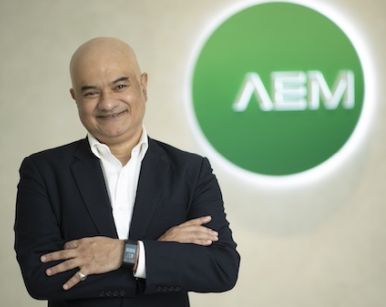| As expected, AEM Holdings reported a loss in 3Q2023, impacted by a one-off legal settlement of US$20 million. The company was also facing a severe downturn in the semiconductor cycle. Pre-tax profit before exceptionals was S$42.6 million (including exceptionals, pre-tax profit was S$10.1 million) compared to S$152 million in 9M2022. More specifically, the downturn saw its key customer's capex deferred. Same thing with new customers' launch of new devices, which would have required more test equipment purchases from AEM. Ominously, Singapore-listed AEM (market cap: S$1 billion) signalled that its recovery has been further delayed, likely to 2H2024 instead of 1H2024 as guided previously.
AEM continues to invest in R&D, resulting in a growing patent portfolio, which raises its standing with its customers. "We firmly believe that we are well-positioned to take advantage of the market upswing expected in late 2024 and beyond." |
| During the Q&A session at last week's earnings call, a fund manager asked a question on AEM's standing in the tester landscape. CEO Chandran Nair's reply is insightful. This is why AEM is a billion-dollar company: |
Could you help us understand what a customer considers when choosing a system level tester? Why would a customer decide to go with AEM over Advantest for example or vice versa because I understand that Advantest has customized offerings for SLT as well.
I'm not going to talk too much about Advantest -- I mean they have their offering but I'd really want to look at the pedigree, the history of a system level test.
There's only one company in this world that has over 1,000 testers that deal with system level test running 24/7 and that's us.
For a long time, there was only one company at high volume that needed to automate system level tests and did a 100% population testing. That was our key customer, Intel…
 "There's only one company in this world that has over 1,000 testers that deal with system level tests running 24/7 -- and that's us." -- CEO Chandran Nair |
It's almost two decades in now, so we have both the pedigree and the experience of providing cutting edge, highly reliable robust systems that require a high level of sophistication and we've deployed it all over the world whether it's China or Malaysia Singapore or Costa Rica in Europe it doesn't matter.
So we have that success, that pedigree is one reason that customers choose us. The second reason is the traditional competitors without mentioning names typically are companies that have a very strong DNA of standard product.
What that means is when they go to a customer they say this is what we have and if you want something else too bad for you, you figure out and you change your process to fit what the standard product does. With system level tests in particular but with Test 2.0 in general our approach is over the last few years we have created a robust platform, a robust architecture, that can be customized or composed to the customers’ needs.
As devices get more complex, customers are looking at optimizing test flow, they're looking at okay do I just add system level test as an additional step and add expenses or are there ways that I can kind of optimize it by pulling in some features of say a final test into system level tests?
That kind of flexibility at scale only we have done right, and that's another reason why customers use us. The reason we are able to create these offerings for our customer are twofold.
Apart from our DNA of creating composable solutions at scale, the other thing is we do not have a multi-billion dollar old iron or big iron at business that we have to protect, so we can go to the customer offering truly new ways of testing keeping the customers' interest in mind as opposed to trying to protect something that is legacy for us and milking the cow, so this gives us a tremendous amount of flexibility.
|







